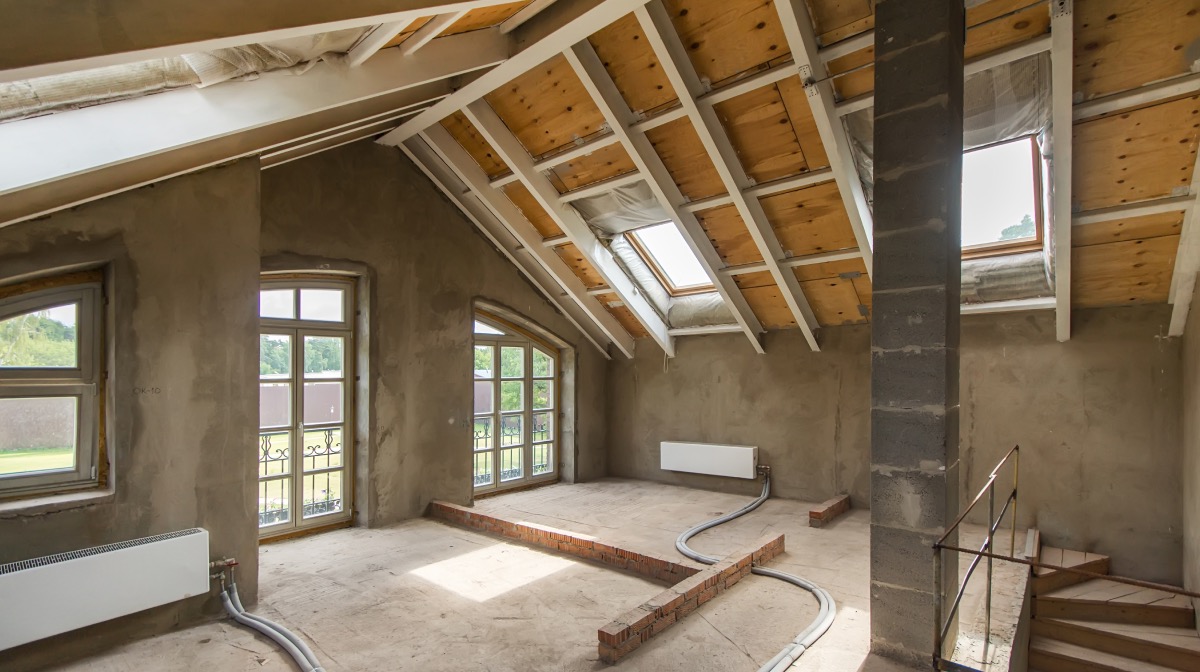

Articles
Why Does My Attic Get So Hot
Modified: February 24, 2024
Learn why your attic gets unbearably hot and discover helpful articles to help you find effective solutions.
(Many of the links in this article redirect to a specific reviewed product. Your purchase of these products through affiliate links helps to generate commission for Storables.com, at no extra cost. Learn more)
Introduction
Have you ever wondered why your attic feels like an oven during the summer months? The intense heat that builds up in the attic can make it unbearable and potentially even impact the comfort of the rest of your home. Understanding why your attic gets so hot is the first step in finding solutions to this common problem.
Several factors contribute to the excessive heat in your attic. These include a lack of insulation, poor ventilation, the color and material of your roof, and the location and climate of your area. By addressing these issues, you can not only make your attic more comfortable but also improve energy efficiency and potentially save on cooling costs.
Key Takeaways:
- Addressing attic heat through proper insulation, ventilation, and reflective roof coatings can reduce energy costs, protect belongings, and create a more comfortable living environment while extending the lifespan of your roof and HVAC system.
- Seeking professional attic heat reduction services ensures expert assessment, customized solutions, and long-term benefits, saving time and effort while improving energy efficiency and creating a more comfortable home environment.
Factors Contributing to Attic Heat
There are several factors that can contribute to the excessive heat in your attic. Understanding these factors will help you pinpoint the cause and find appropriate solutions. Let’s take a closer look:
- Lack of Insulation: One of the primary reasons for a hot attic is insufficient insulation. Without proper insulation, the sun’s radiant heat penetrates the roof, raising the temperature inside. This heat then transfers to the living spaces below, leading to increased cooling costs.
- Poor Ventilation: Inadequate ventilation can trap hot air in the attic, preventing it from escaping. Without proper airflow, the heat builds up, making the attic space sweltering. This can also lead to moisture buildup, which can cause mold and other issues.
- Roof Color and Material: The color and material of your roof can significantly impact the heat in your attic. Dark-colored roofs tend to absorb more heat from the sun, increasing the temperature inside the attic. Likewise, roofs made of materials that conduct heat, like metal, can contribute to attic heat buildup.
- Location and Climate: The geographic location and climate of your area also play a role in attic heat. If you live in a region with hot summers and intense sunlight, your attic is more likely to get extremely hot. Additionally, factors such as proximity to large bodies of water or urban heat islands can influence attic temperatures.
By considering these factors, you can gain insight into why your attic gets so hot and work towards finding suitable solutions to minimize the heat and create a more comfortable living environment.
Lack of Insulation
One of the primary factors contributing to the heat buildup in your attic is a lack of insulation. Without proper insulation, the attic becomes susceptible to the sun’s radiant heat, which can penetrate through the roof and raise the temperature inside.
Insulation acts as a barrier, reducing the transfer of heat between the outside and inside of your home. In the case of the attic, insulation helps to prevent the sun’s energy from directly entering the living spaces below. It acts as a shield, keeping the hot air from infiltrating your home during the summer months.
If your attic lacks sufficient insulation, the heat from the sun can easily seep through the roof and radiate into the living areas of your home. This not only makes your home uncomfortable but also forces your HVAC system to work harder to maintain a consistent temperature, leading to increased energy costs.
The insulation should be installed properly and meet the recommended R-value for your climate zone. R-value refers to the insulation’s ability to resist heat flow. Higher R-value insulation provides better thermal resistance, which helps to keep your attic cooler and reduce energy consumption.
Addressing the issue of inadequate insulation can significantly reduce the heat in your attic. Consider hiring a professional insulation contractor to assess your attic’s insulation levels and recommend appropriate measures. They may suggest adding more insulation or upgrading to a more efficient type to improve the overall energy efficiency of your home.
Poor Ventilation
Poor ventilation is another significant factor contributing to the excessive heat in your attic. Without proper airflow, hot air becomes trapped, leading to an increase in temperature. This can not only make your attic unbearable during the summer months but also contribute to other issues such as moisture buildup and potential damage to the structure of your home.
Effective attic ventilation allows hot air to escape and fresh air to circulate, helping to regulate temperatures and prevent heat buildup. It works by creating a pathway for air to enter the attic from outside and then exit, carrying heat and moisture with it. This can be achieved through a combination of intake vents (usually located near the eaves or soffits) and exhaust vents (typically located near the roof’s peak).
If your attic has poor ventilation, hot air becomes trapped and can lead to a variety of issues. The stagnant hot air can permeate through your attic and into the living spaces below, making your home uncomfortable. It can also cause moisture buildup, which can lead to mold growth and damage your insulation and the structure of your home.
To improve attic ventilation, there are a few key steps you can take. Firstly, ensure that your existing vents are not obstructed by debris or other materials. Clear any blockages to allow for proper airflow. Secondly, consider adding additional vents, such as soffit vents or ridge vents, to optimize ventilation. These vents work together to establish a continuous flow of air throughout the attic space.
If you are unsure about how to properly ventilate your attic, it is best to consult with a professional who specializes in attic ventilation systems. They can assess your attic’s current ventilation setup, determine the most effective options for your home, and ensure that the installation is done correctly.
By improving attic ventilation, you can help minimize heat buildup, reduce energy costs, prevent moisture-related issues, and create a more comfortable living environment for you and your family.
Roof Color and Material
The color and material of your roof can significantly influence the heat levels in your attic. Dark-colored roofs, such as black or dark gray, tend to absorb more heat from the sun compared to lighter-colored roofs. This absorption of heat can elevate the temperature inside your attic.
When sunlight hits a dark-colored roof, the roof’s surface absorbs a portion of the energy, converting it into heat. This heat is then transferred to the attic space below, raising the overall temperature. In contrast, lighter-colored roofs reflect more of the sun’s energy, reducing the amount of heat transferred to the attic.
In addition to roof color, the material used in constructing your roof can also impact attic heat. Certain roofing materials are more prone to absorbing and retaining heat, which can contribute to a hotter attic. Materials such as asphalt shingles, metal, and tile are known for absorbing and radiating heat more than other options like wood or slate.
If you have a dark-colored or heat-absorbent roof material, you may consider taking steps to minimize the heat transfer to your attic. One option is to use a reflective roof coating. These coatings are applied directly to the roof and have properties that help reflect sunlight and reduce the heat absorbed by the roof. Reflective coatings can significantly lower the temperature inside your attic and make it more comfortable.
Another approach is to consider replacing your current roofing material with a lighter-colored or heat-reflective alternative. Light-colored roofing materials, such as white or light gray, naturally reflect more sunlight and can help keep your attic cooler.
When deciding on the color and material for your roof, it is essential to consider the aesthetic appeal, durability, and energy efficiency. Consulting with a roofing professional can provide valuable insights and help you make an informed decision based on your specific needs and preferences.
By choosing a roof color and material that minimizes heat absorption and promotes reflectivity, you can reduce the heat in your attic, improve energy efficiency, and create a more comfortable living environment.
Read more: Why Is My Basement So Hot
Location and Climate
The location and climate of your area play a significant role in the heat levels experienced in your attic. Different regions have varying levels of sunlight exposure, temperature ranges, and overall climate conditions, all of which can impact attic heat.
If you live in a region with hot summers and intense sunlight, your attic is more likely to get extremely hot. Areas that are closer to the equator or located in arid climates tend to experience higher temperatures, leading to increased heat in the attic. Additionally, regions with a high number of sunny days throughout the year contribute to higher attic temperatures.
Proximity to large bodies of water or urban heat islands can also influence attic heat. Coastal areas and regions near large lakes or rivers generally experience lower temperatures due to the cooling effects of the water. On the other hand, urban heat islands, where there are higher concentrations of buildings and paved surfaces, can contribute to increased temperatures in both outdoor and indoor spaces, including the attic.
The climate of your area, including humidity levels and the occurrence of heatwaves, can also impact attic heat. High humidity levels make it more challenging for heat to dissipate from the attic, while heatwaves can cause a rapid increase in temperatures throughout the entire home, including the attic.
It is essential to consider your location and climate when addressing attic heat. If you live in a hot and sunny area, you may need to implement additional measures to mitigate the heat in your attic. This could include increasing insulation levels, improving ventilation, or considering specialized cooling solutions such as attic fans or reflective roof coatings.
Understanding the climate and environmental factors specific to your location allows you to make informed decisions about the best strategies to reduce attic heat. Consulting with local professionals who have knowledge and experience with the climate in your area can provide valuable insights and guidance for optimizing your attic’s temperature.
By considering your location and climate, you can better address the unique challenges posed by attic heat and create a more comfortable and energy-efficient living environment.
Consequences of a Hot Attic
The heat that builds up in your attic can have several negative consequences. It not only affects the attic itself but also impacts the comfort, energy efficiency, and overall well-being of your home. Let’s explore some of the consequences of a hot attic:
- Increased Energy Costs: A hot attic can significantly impact your energy bills. When the attic becomes excessively hot, it radiates heat into the rest of your home, making it harder for your air conditioning system to cool the living spaces. This results in increased energy consumption as your cooling system works overtime to combat the heat gain.
- Damage to Stored Items: If you use the attic for storage purposes, the excessive heat can damage your belongings. Items such as photographs, documents, electronics, and delicate materials can be adversely affected by prolonged exposure to high temperatures. Heat-sensitive items may deteriorate or become warped, leading to potential financial losses.
- Wear and Tear on HVAC System: A hot attic places additional strain on your HVAC (heating, ventilation, and air conditioning) system. The cooling system has to work harder and run for longer periods to compensate for the heat infiltration into the living spaces. This increased workload can lead to premature wear and tear, decreased efficiency, and a shortened lifespan of your HVAC system.
- Potential Health Risks: Excessive attic heat can indirectly impact your health and well-being. The hot attic can result in increased indoor temperatures, making it difficult to maintain a comfortable living environment. This can lead to discomfort, fatigue, and even heat-related health issues such as heat exhaustion or heatstroke, particularly for the elderly, young children, or those with pre-existing medical conditions.
Understanding the consequences of a hot attic emphasizes the importance of addressing the issue promptly. By taking measures to cool your attic and reduce heat buildup, you can not only improve energy efficiency and lower utility bills but also protect your belongings and ensure a healthier living environment for you and your family.
Increased Energy Costs
One of the significant consequences of a hot attic is the impact it can have on your energy bills. When your attic becomes excessively hot, it acts as a radiant heat source that can raise the temperature throughout your home. This, in turn, forces your cooling system to work overtime to maintain a comfortable indoor temperature.
The heat that builds up in the attic seeps into the living spaces below, making it more challenging for your air conditioning system to cool the house effectively. This means that your cooling system needs to work harder and run for more extended periods to combat the heat infiltration from the attic. As a result, your energy consumption increases, leading to higher energy bills.
The increased workload on your cooling system can have a substantial impact on its efficiency. When the system is constantly running to compensate for the excessive attic heat, it can experience wear and tear more quickly, leading to decreased efficiency and potentially costly repairs. Additionally, the increased energy consumption contributes to higher greenhouse gas emissions, negatively impacting the environment.
By addressing the excessive heat in your attic, you can significantly reduce your energy costs. Here are some steps you can take:
- Insulating the Attic: Proper insulation in the attic helps to prevent heat transfer from the roof to the living spaces below. Insulation acts as a thermal barrier, reducing the amount of heat that enters your home. By adding or upgrading insulation, you can create a more energy-efficient space and reduce your cooling costs.
- Improving Ventilation: Adequate attic ventilation is crucial in helping to expel hot air and prevent it from lingering in the attic. Good ventilation promotes the flow of fresh air, which helps to dissipate heat and maintain lower temperatures. Ensuring proper airflow through intake and exhaust vents can reduce your reliance on air conditioning and lower energy consumption.
- Using Reflective Roof Coatings: Applying reflective coatings to your roof can help reduce the amount of heat absorbed by the attic. These coatings have properties that reflect sunlight, keeping the roof surface cooler and preventing heat from transferring to the attic space. With a cooler attic, you can lower your cooling needs, resulting in decreased energy usage.
By implementing these energy-saving measures, you can minimize attic heat, optimize your cooling system’s performance, and ultimately lower your energy costs. It is recommended to consult with professionals who specialize in energy efficiency or home improvement to ensure the most effective solutions for your specific attic and climate conditions.
Damage to Stored Items
A hot attic can pose a threat to items stored in that space. Whether you use your attic for seasonal storage, keepsakes, or valuable possessions, the excessive heat can cause damage and deterioration over time.
High temperatures can accelerate the aging process and cause materials to degrade more rapidly. Items such as photographs, documents, sensitive electronics, wooden furniture, and delicate fabrics are particularly vulnerable to heat damage. Prolonged exposure to elevated temperatures can result in warping, fading, discoloration, and even complete loss of functionality.
Moisture can also become a concern in hot attics, especially in humid climates. The combination of heat and humidity can create a breeding ground for mold and mildew, which can wreak havoc on stored items. Mold growth can lead to irreversible damage, leaving behind stains, odors, and potential health hazards.
To protect your stored items from damage caused by a hot attic, consider the following measures:
- Insulation: Adequate insulation not only helps to regulate temperature but also provides a buffer against moisture. Install insulation that has a vapor barrier, which helps prevent excess moisture from entering the attic space.
- Climate Control: If your attic serves as a long-term storage area for temperature-sensitive items, consider investing in climate control. This can involve installing air conditioning vents, dehumidifiers, or even a separate HVAC system specifically designed for the attic space.
- Properly stored items: Ensure that your belongings are stored correctly to minimize the impact of high temperatures. Use airtight containers or sealable bags to protect items from moisture and dust. Keep sensitive items away from direct sunlight and choose storage solutions that offer insulation against temperature fluctuations.
Regularly inspect your attic for signs of moisture or heat-related damage. If you notice any issues, take immediate action to mitigate the problem and prevent further deterioration.
By adopting these precautions, you can safeguard your stored items from the damaging effects of a hot attic. Protecting your valuable possessions not only preserves their sentimental and financial value but also provides you with peace of mind knowing that they are stored in optimal conditions.
Consider installing attic ventilation to help reduce the heat buildup. This can include adding soffit vents, ridge vents, or attic fans to improve air circulation and reduce the temperature in the attic.
Read more: Why Does My Hot Tub Have So Many Bubbles
Wear and Tear on HVAC System
A hot attic can put a significant strain on your HVAC (heating, ventilation, and air conditioning) system. The excessive heat in the attic forces your cooling system to work harder and longer to maintain a comfortable indoor temperature throughout your home. This increased workload can lead to accelerated wear and tear on your HVAC system, impacting its performance and lifespan.
When your HVAC system runs continuously, it undergoes more cycles, causing components to wear out at a faster rate. The constant operation in an attempt to combat the heat infiltration from the attic can lead to increased motor wear, refrigerant leaks, and stress on other critical components. This wear and tear can result in reduced efficiency, decreased cooling capacity, and potentially costly repairs or system replacements.
Additionally, the strain placed on your HVAC system by a hot attic can also contribute to higher energy consumption. The system needs to consume more energy to overcome the heat gain and maintain the desired indoor temperature. This not only increases your energy bills but also has a negative environmental impact.
To protect your HVAC system from unnecessary wear and tear caused by a hot attic, consider the following measures:
- Attic Insulation: Properly insulating your attic can help minimize heat transfer from the attic to the living spaces. Insulation acts as a barrier, reducing the workload on your HVAC system by keeping the heat out and maintaining a more stable indoor temperature.
- Ventilation Improvement: Enhancing attic ventilation allows for effective airflow, helping to dissipate heat and prevent it from affecting the rest of your home. The better the ventilation in your attic, the less strain there will be on your cooling system to cool the house.
- Regular HVAC Maintenance: Schedule routine maintenance for your HVAC system to ensure it is operating efficiently and effectively. Regular inspections, cleaning, and tune-ups by a qualified professional can help identify potential issues early on and make necessary adjustments to improve performance and efficiency.
By addressing the excessive heat in your attic and reducing the strain on your HVAC system, you can extend its lifespan and optimize its performance. It is also essential to consult with HVAC professionals for expert advice on how to best protect your system and ensure its longevity.
Remember, a well-maintained HVAC system not only provides comfort but also helps lower energy costs and reduces environmental impact.
Potential Health Risks
A hot attic can indirectly pose health risks to you and your family. When the attic becomes excessively hot, it can lead to increased indoor temperatures, making it challenging to maintain a comfortable living environment. This prolonged exposure to high temperatures can have several negative effects on your health and well-being.
Here are some potential health risks associated with a hot attic:
- Discomfort and Fatigue: High temperatures can cause discomfort and make it difficult to relax and sleep. When your living spaces are consistently too hot due to a hot attic, you may experience fatigue, lack of energy, difficulty concentrating, and irritability.
- Heat Exhaustion: Prolonged exposure to high temperatures can lead to heat exhaustion, which is a heat-related illness characterized by heavy sweating, rapid pulse, dizziness, nausea, and headache. If left untreated, heat exhaustion can progress to heatstroke, a severe and potentially life-threatening condition.
- Dehydration: Excessive heat can lead to increased sweating and fluid loss from your body. If you don’t replenish the lost fluids, it can result in dehydration. Dehydration can cause symptoms such as dry mouth, thirst, fatigue, dizziness, and confusion.
- Aggravation of Existing Health Conditions: The extreme heat in your home caused by a hot attic can exacerbate certain health conditions, such as cardiovascular diseases, respiratory issues, and allergies. The added stress that high temperatures place on the body can worsen symptoms and potentially lead to medical emergencies.
- Reduced Indoor Air Quality: A hot attic can contribute to poor indoor air quality. The hot air in the attic can contain pollutants, allergens, and mold spores, which can infiltrate your living spaces. Breathing in these contaminants can irritate the respiratory system and worsen existing respiratory conditions.
To minimize the potential health risks associated with a hot attic, it’s essential to address the issue promptly. Implementing strategies to cool down the attic, such as insulation, ventilation improvements, and the use of reflective roof coatings, can help create a more comfortable and healthier living environment.
If you or your family members experience severe symptoms due to heat exposure, such as dizziness, confusion, or loss of consciousness, seek medical attention immediately. Stay hydrated, stay in cooler areas of your home, and consider using fans or portable air conditioning units to help alleviate the discomfort caused by the hot attic.
By prioritizing your health and taking the necessary steps to cool down your living spaces, you can reduce the potential health risks associated with a hot attic and ensure the well-being of you and your family.
Solutions for a Hot Attic
If you’re dealing with a hot attic, there are several effective solutions available to help alleviate the heat and create a more comfortable living environment. By addressing the root causes of attic heat, you can reduce energy costs, protect your belongings, and promote better indoor air quality. Here are some solutions:
- Insulating the Attic: Proper attic insulation is crucial in reducing heat transfer from the roof to the living spaces. Insulation acts as a thermal barrier, preventing the sun’s radiant heat from penetrating the attic. Make sure the insulation meets the recommended R-value for your climate zone.
- Improving Ventilation: Adequate attic ventilation facilitates the exchange of hot air with outside air, preventing heat buildup. Consider installing soffit vents to allow cool air to enter the attic and ridge vents or gable vents for hot air to exit. This promotes airflow and helps regulate temperatures.
- Installing Attic Fans: Attic fans can provide additional ventilation and assist in expelling hot air from the attic. They work by drawing in cooler air from outside and pushing out the hot air. Attic fans can be powered by electricity or solar energy, offering energy-efficient options to cool down the attic.
- Using Reflective Roof Coatings: Applying reflective roof coatings to your roof can help reduce the amount of heat absorbed by the attic. These reflective coatings reflect sunlight, preventing the transfer of heat into the attic space. This solution can be especially effective if your roof is dark-colored or made of heat-absorbent materials.
- Professional Attic Heat Reduction Services: If you’re unsure or unable to implement the solutions yourself, consider hiring professionals who specialize in attic heat reduction. They can assess your specific situation, recommend the most suitable solutions, and ensure they are implemented correctly.
It’s important to note that the best solution for your hot attic may involve a combination of these strategies. Consult with professionals who have expertise in attic insulation, ventilation, and roofing to determine the most effective and efficient approach for your specific needs.
By implementing these solutions, you can significantly reduce the heat in your attic, improve energy efficiency, extend the lifespan of your HVAC system, protect your stored belongings, and enhance the overall comfort and livability of your home.
Insulating the Attic
Insulating your attic is an essential step in reducing attic heat and improving energy efficiency in your home. A properly insulated attic acts as a barrier against the transfer of heat between the roof and the living spaces below. This helps to keep your home cooler in the summer months and warmer in the winter months.
Here are the key benefits of insulating your attic:
- Reduced Heat Transfer: Insulation acts as a thermal barrier, preventing the sun’s radiant heat from penetrating through the roof and entering your home. It minimizes heat transfer, keeping your attic cooler and reducing the workload on your cooling system.
- Improved Energy Efficiency: By minimizing heat transfer, attic insulation reduces the need for your HVAC system to run continuously to maintain a comfortable temperature. This helps lower energy consumption and can result in significant savings on your heating and cooling costs.
- Enhanced Comfort: A properly insulated attic helps create a more stable indoor temperature throughout your home. It prevents hot spots and uneven heating or cooling, ensuring a more comfortable living environment for you and your family.
- Protection for Stored Items: Attic insulation helps regulate temperatures in the attic, which is particularly important if you use it for storage. Stable temperatures can protect your belongings from extreme heat or cold, reducing the risk of damage or deterioration.
- Noise Reduction: Insulation not only helps control temperature but also acts as a sound barrier. It helps absorb and minimize outside noises, creating a quieter and more peaceful living environment.
When it comes to insulating your attic, it is crucial to consider the recommended insulation level for your climate zone. The insulation’s effectiveness is measured by its R-value, which represents its resistance to heat flow. The higher the R-value, the better the insulation’s ability to limit heat transfer.
Common types of insulation used in attics include fiberglass, cellulose, and spray foam insulation. Each type has its advantages and considerations, so it’s important to consult with insulation professionals to determine the best option for your specific attic and budget.
Proper installation is critical to ensure maximum insulation performance. Gaps, voids, or compressed insulation can compromise its effectiveness. Hiring professional insulation installers will ensure that the insulation is installed correctly, covering all areas and achieving the desired R-value.
By insulating your attic, you can significantly reduce attic heat, improve energy efficiency, and create a more comfortable living environment. Take the necessary steps to insulate your attic and enjoy the benefits of a well-insulated home.
Read more: Why Does My Toilet Bowl Get Dirty So Quickly
Improving Ventilation
Improving attic ventilation is a crucial step in reducing heat buildup and maintaining a comfortable living environment. Proper airflow allows hot air to escape and fresh air to circulate, preventing excessive heat from lingering in the attic and transferring into the living spaces below. Improved ventilation offers several benefits:
- Heat Reduction: Adequate attic ventilation helps dissipate heat, preventing it from becoming trapped and raising the overall temperature. It promotes airflow, allowing hot air to exit and cooler air to enter, effectively cooling down the attic.
- Mold and Moisture Prevention: Poor ventilation can contribute to excess moisture buildup in the attic, leading to mold growth and potential damage to the structure. By improving ventilation, you can reduce the risk of mold and moisture-related problems, ensuring a healthier and safer living environment.
- Improved Energy Efficiency: Proper attic ventilation helps regulate temperatures, reducing the strain on your cooling system. By allowing hot air to escape, your HVAC system doesn’t have to work as hard to cool down your home, resulting in energy savings and lower utility bills.
- Extended Roof Lifespan: Excessive heat can cause damage to your roof, including warping, expansion, and accelerated deterioration of roofing materials. Improved ventilation helps equalize the temperature, reducing the risk of roof damage and prolonging its lifespan.
- Prevention of Ice Dams: In colder climates, ice dams can form on the roof during winter, leading to water leaks and potential damage. Proper ventilation helps regulate attic temperatures, preventing the melting and refreezing cycle that contributes to the formation of ice dams.
Here are some methods to improve attic ventilation:
- Soffit Vents: Soffit vents are installed underneath the eaves or overhangs of the roof. They allow cool air to enter the attic from the outside, promoting airflow.
- Ridge Vents: Ridge vents are installed at the peak of the roof, allowing hot air to escape from the attic. They work in tandem with soffit vents to create a natural flow of air through the attic space.
- Gable Vents: Gable vents are located on the sides of the attic and provide an additional pathway for hot air to exit. They are particularly useful when ridge vents cannot be installed.
- Turbine Vents: Turbine vents are powered by wind and use the natural force to draw hot air out of the attic. They are effective in areas with consistent wind flow.
- Attic Baffles: Attic baffles are installed to help maintain the integrity of insulation and ensure proper ventilation. They create a gap between the insulation and the roof, allowing air to circulate freely.
Consult with ventilation professionals or roofing contractors to determine the best ventilation solution for your specific attic layout and climate conditions. They can assess your attic and recommend the most suitable ventilation options for optimal airflow and heat reduction.
Improving attic ventilation is a proactive measure to prevent heat-related issues and improve energy efficiency. By enhancing airflow, you can maintain a cooler, healthier, and more comfortable home environment for you and your family.
Installing Attic Fans
Installing attic fans is an effective solution to reduce heat buildup and improve ventilation in your attic. Attic fans work by expelling hot air from the attic space, helping to keep the temperature down and prevent excessive heat transfer into the living areas below. Here are the key benefits of installing attic fans:
- Heat Reduction: Attic fans actively draw hot air out of the attic, promoting air exchange and reducing the overall temperature. This helps to prevent the attic from becoming a heat source and transferring heat to the rest of your home.
- Improved Ventilation: Attic fans improve the overall ventilation in your attic by facilitating the movement of air. When properly installed, they create a constant flow of fresh air, allowing hot air to escape and allowing cooler outside air to enter, effectively cooling down the attic space.
- Energy Efficiency: Attic fans can reduce the workload on your HVAC system by creating a cooler attic environment. This means your cooling system doesn’t have to work as hard to maintain a comfortable indoor temperature, resulting in energy savings and potentially lower utility bills.
- Moisture Control: Improved airflow from attic fans helps prevent moisture buildup and condensation, reducing the risk of mold growth and damage to the structure. They assist in maintaining a dry and healthy attic environment.
- Extended Roof Lifespan: By preventing excessive heat buildup and moisture, attic fans can help extend the lifespan of your roof. Excessive heat can cause damage to roofing materials, while moisture can lead to deterioration and costly repairs. By keeping the attic cooler and drier, attic fans contribute to the longevity of your roof.
When it comes to installing attic fans, there are two main types to consider: roof-mounted fans and gable-mounted fans. Roof-mounted fans are installed on the roof itself and are typically positioned near the ridge to allow hot air to escape. Gable-mounted fans, on the other hand, are installed on the gable end of the attic and work by drawing in fresh air from the outside while expelling hot air.
It’s important to ensure proper installation and sizing of attic fans to maximize their effectiveness. Consulting with professionals or experienced contractors can help you determine the right type and size of attic fan for your specific attic layout, climate conditions, and ventilation needs. They can also ensure that the fans are properly installed, ducted, and wired to optimize performance.
Remember to consider the noise level of attic fans, especially if you have living spaces close to the attic. Opt for models with noise-reducing features or choose a fan with a remote-mounted motor to minimize noise impact.
Installing attic fans can significantly improve attic ventilation, reduce heat buildup, and create a more comfortable and energy-efficient home environment. Consult with professionals to identify the best attic fan solution for your specific needs and enjoy the benefits of a cooler and properly ventilated attic space.
Using Reflective Roof Coatings
Using reflective roof coatings is an effective solution to reduce attic heat and improve energy efficiency in your home. These coatings are designed to reflect sunlight and heat away from your roof, preventing excessive heat absorption and transfer into your attic. Here are the key benefits of using reflective roof coatings:
- Heat Reduction: Reflective roof coatings reflect a significant amount of the sun’s radiant heat, keeping the roof surface cooler and reducing heat transfer to the attic. This helps to create a more comfortable living environment and reduces the workload on your cooling system.
- Energy Efficiency: By reducing attic heat, reflective roof coatings lower the temperature of the entire home. This results in less reliance on air conditioning, reduced energy consumption, and potential energy cost savings.
- Extended Roof Lifespan: Excessive heat can cause thermal expansion and contraction in roofing materials, leading to premature aging and deterioration. Reflective roof coatings help to minimize these temperature fluctuations, extending the lifespan of your roof and reducing the frequency of roof maintenance or replacement.
- Reduced Urban Heat Island Effect: Reflective roof coatings play a role in reducing the urban heat island effect, especially in densely populated areas. By reflecting heat back into the atmosphere instead of releasing it into the surroundings, these coatings help to mitigate local heat buildup, improving overall comfort and air quality in the community.
- Sustainable Solution: Reflective roof coatings contribute to sustainability efforts by lowering energy consumption and reducing the demand for air conditioning. By reducing your home’s carbon footprint, you’re making a positive environmental impact.
Reflective roof coatings are typically applied directly to the roof surface, including asphalt shingles, metal roofs, or other suitable roofing materials. These coatings contain highly reflective pigments or granules that bounce sunlight back into the atmosphere, rather than absorbing and transferring heat to the attic.
When choosing reflective roof coatings, consider factors such as durability, UV resistance, and the product’s solar reflectance index (SRI). The SRI measures a material’s ability to reflect solar heat, and a higher SRI indicates better reflectivity.
It’s important to hire a professional roofing contractor or qualified applicator to properly apply the reflective roof coating. They will ensure the roof surface is clean, dry, and properly prepared before applying the coating. Professional installation will help maximize the effectiveness and longevity of the coating.
Using reflective roof coatings can significantly reduce attic heat, improve energy efficiency, and contribute to a more comfortable living environment. Consult with professionals to determine the best reflective roof coating option and application for your specific roof type, climate conditions, and energy-saving goals.
Professional Attic Heat Reduction Services
When dealing with a hot attic, seeking professional attic heat reduction services can be a worthwhile investment. These services are specifically designed to address attic heat issues and create a more comfortable and energy-efficient living environment. Here are the benefits of opting for professional attic heat reduction services:
- Expert Assessment: Professionals specializing in attic heat reduction services have the experience and expertise to conduct a thorough assessment of your attic. They will identify the specific factors contributing to the heat buildup, such as insulation deficiencies, ventilation problems, or roofing issues.
- Customized Solutions: Based on their assessment, professionals can recommend tailored solutions to address the unique challenges of your attic. They will take into account your climate, roof type, budget, and energy-saving goals to provide you with the best options for reducing attic heat.
- Quality Materials and Equipment: Attic heat reduction professionals have access to high-quality materials and equipment specifically designed for heat reduction. They know which products are most effective and can install them with precision and expertise.
- Professional Installation: Proper installation is crucial for the effectiveness of attic heat reduction measures. Professionals will ensure insulation is evenly distributed, ventilation systems are installed correctly, and reflective roof coatings are applied properly. This guarantees optimal performance and long-lasting results.
- Compliance with Building Codes: Attic heat reduction professionals are knowledgeable about local building codes and regulations. By hiring professionals, you can have peace of mind knowing that the work will be done in compliance with these standards.
- Time and Cost Savings: While DIY approaches may seem cost-effective initially, they can become time-consuming and may not provide long-term solutions. Professional attic heat reduction services save you time and effort by handling the entire process efficiently. Moreover, their expertise can help you avoid costly mistakes down the line.
- Long-Term Benefits: Professional attic heat reduction services provide long-term benefits by creating a more comfortable living environment, improving energy efficiency, reducing energy costs, extending the lifespan of your roof and HVAC system, and potentially increasing the value of your home.
When choosing professional attic heat reduction services, research and select reputable contractors with a proven track record in attic insulation, ventilation, and roofing. Check for certifications, qualifications, and ask for references or customer reviews to ensure you are hiring a trusted professional.
By opting for professional services, you can have confidence that your attic heat issues will be effectively addressed and that the work will be done to a high standard. Enjoy the benefits of a cooler, more energy-efficient home with the expertise and assistance of professionals specialized in attic heat reduction services.
Read more: Why My Dryer Not Getting Hot
Conclusion
A hot attic can be a frustrating and uncomfortable problem, but there are effective solutions available to address it. Factors such as lack of insulation, poor ventilation, roof color and material, location, and climate all contribute to the heat buildup in your attic. Understanding these factors is essential in finding the right solutions to reduce attic heat.
Insulating the attic is a crucial step to prevent heat transfer and improve energy efficiency. Proper insulation creates a thermal barrier, reducing the heat that penetrates through the roof and enters your home. By adding insulation or upgrading existing insulation to meet recommended R-values, you can create a cooler attic and lower your energy consumption.
Improving ventilation is another vital factor in combating a hot attic. Adequate airflow allows hot air to escape and cool air to enter the attic. Installing soffit vents, ridge vents, gable vents, or attic fans can help create better ventilation and promote airflow, effectively reducing attic heat.
Consider the color and material of your roof, as they can significantly impact attic heat. Dark-colored roofs absorb more heat, while lighter-colored or reflective roof coatings help to reflect sunlight and reduce heat absorption. Choosing the right roofing material and using reflective roof coatings can make a noticeable difference in attic temperature.
Location and climate are also important considerations. Regions with hot summers and intense sunlight experience more significant attic heat. Evaluating the specific climate conditions of your area can help determine the best strategies to cool down your attic.
The consequences of a hot attic, such as increased energy costs, damage to stored items, wear and tear on your HVAC system, and potential health risks, highlight the importance of finding solutions for this issue. Insulating the attic, improving ventilation, using reflective roof coatings, and seeking professional attic heat reduction services are all effective options to consider.
By addressing the heat in your attic, you can create a more comfortable living environment, improve energy efficiency, protect your belongings, extend the lifespan of your roof and HVAC system, and reduce potential health risks associated with excessive heat. Consult with professionals to determine the best approach for your specific attic and climate conditions, and enjoy the benefits of a cooler and more energy-efficient home.
Frequently Asked Questions about Why Does My Attic Get So Hot
Was this page helpful?
At Storables.com, we guarantee accurate and reliable information. Our content, validated by Expert Board Contributors, is crafted following stringent Editorial Policies. We're committed to providing you with well-researched, expert-backed insights for all your informational needs.
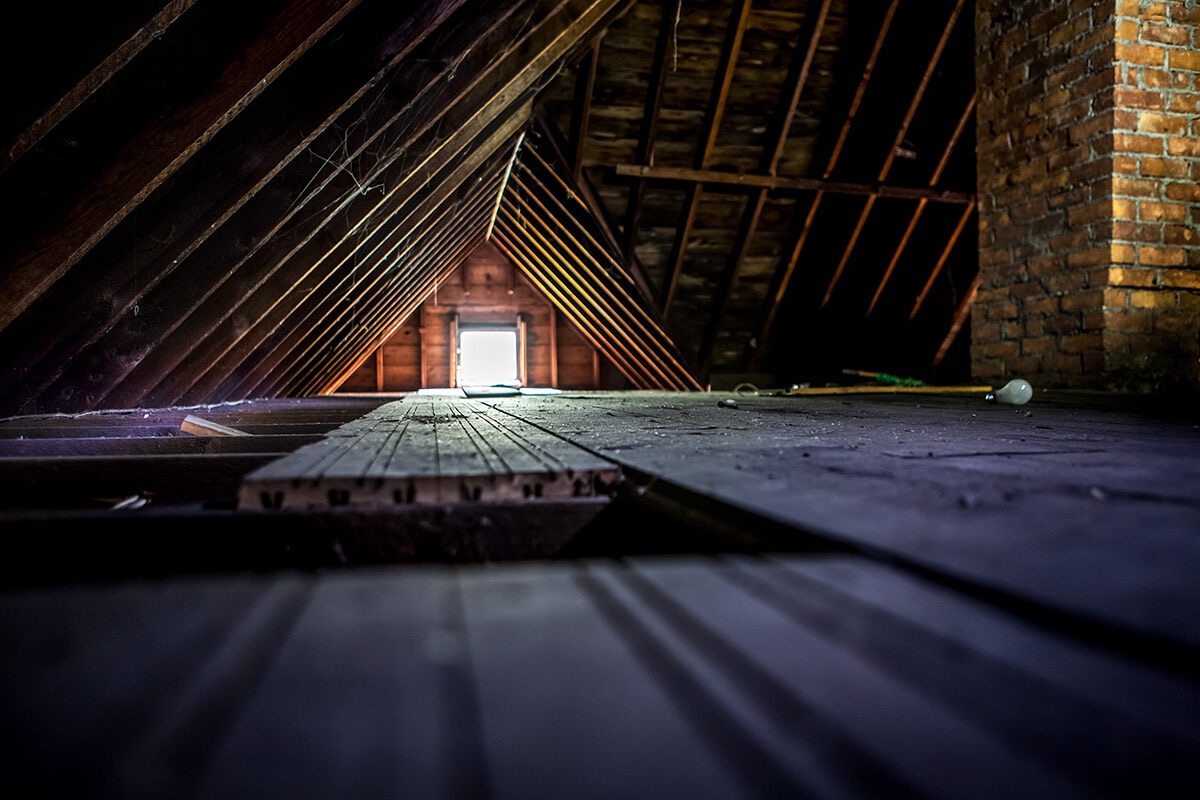

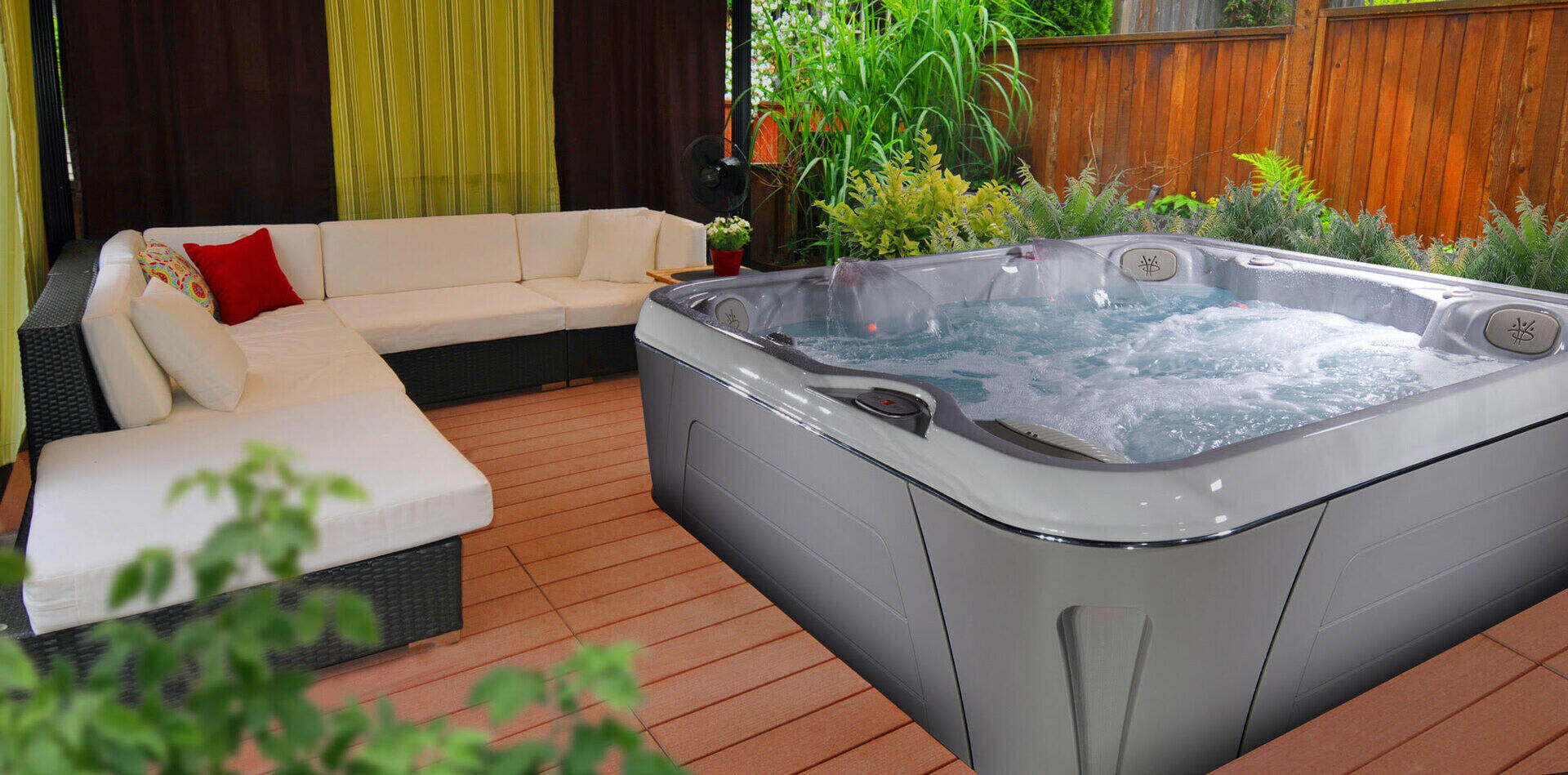
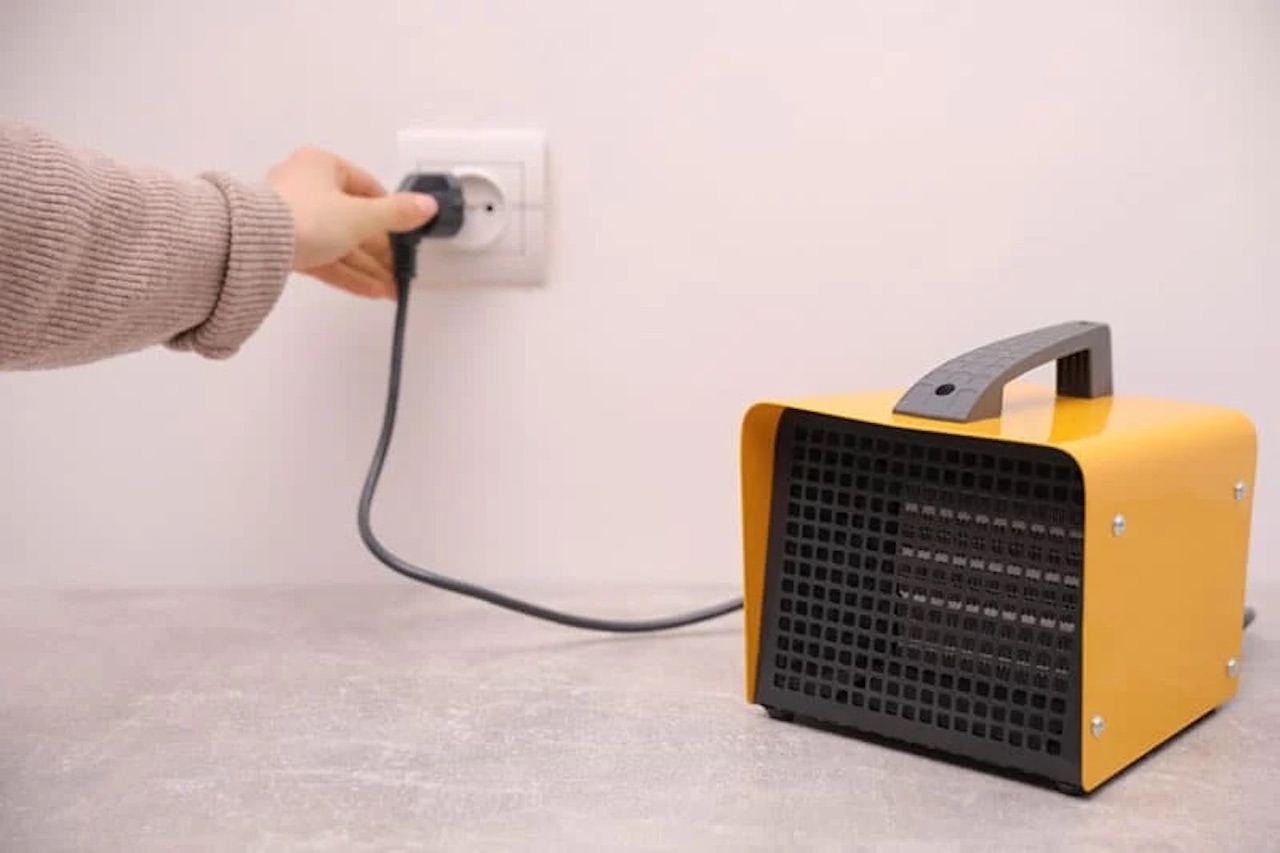
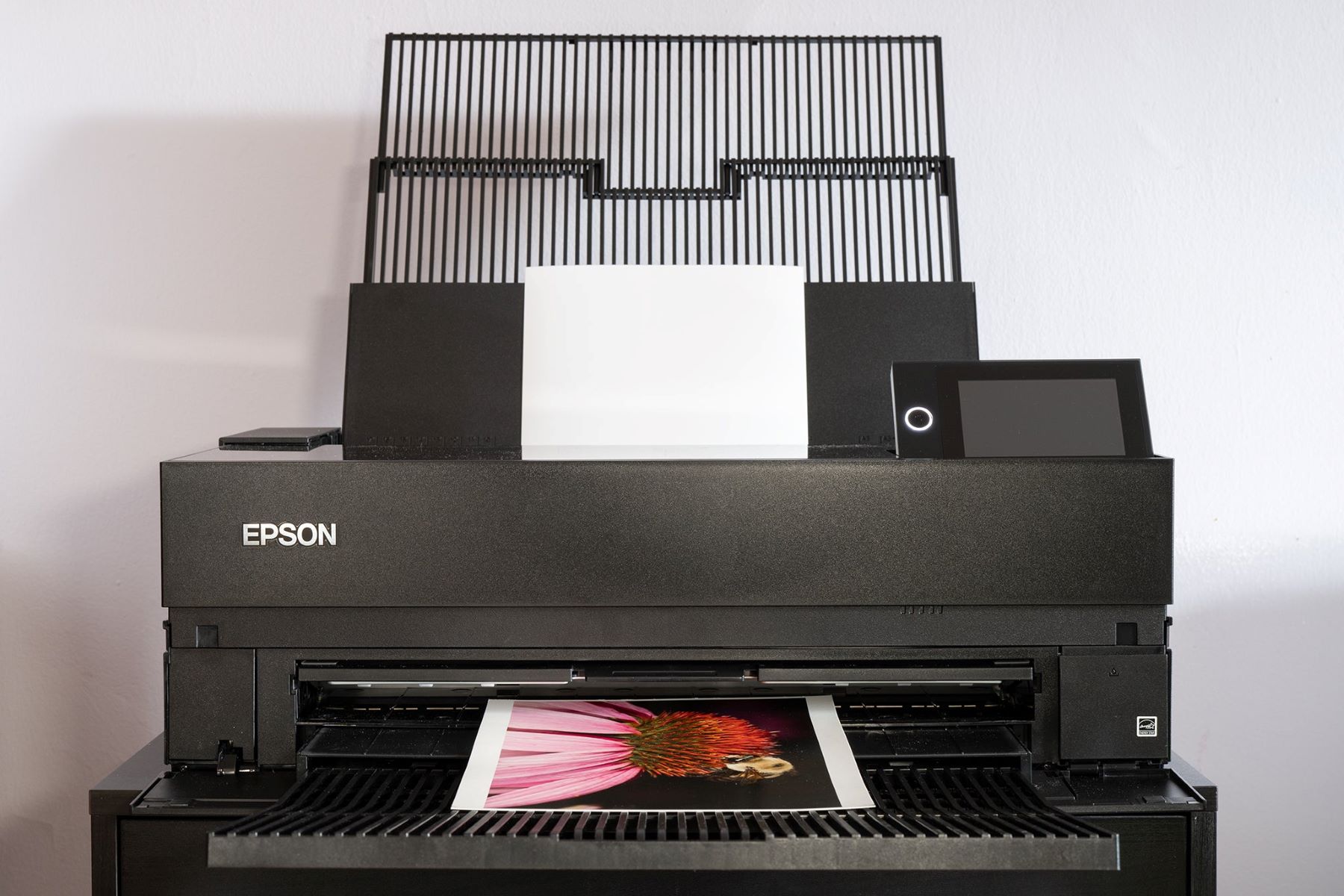
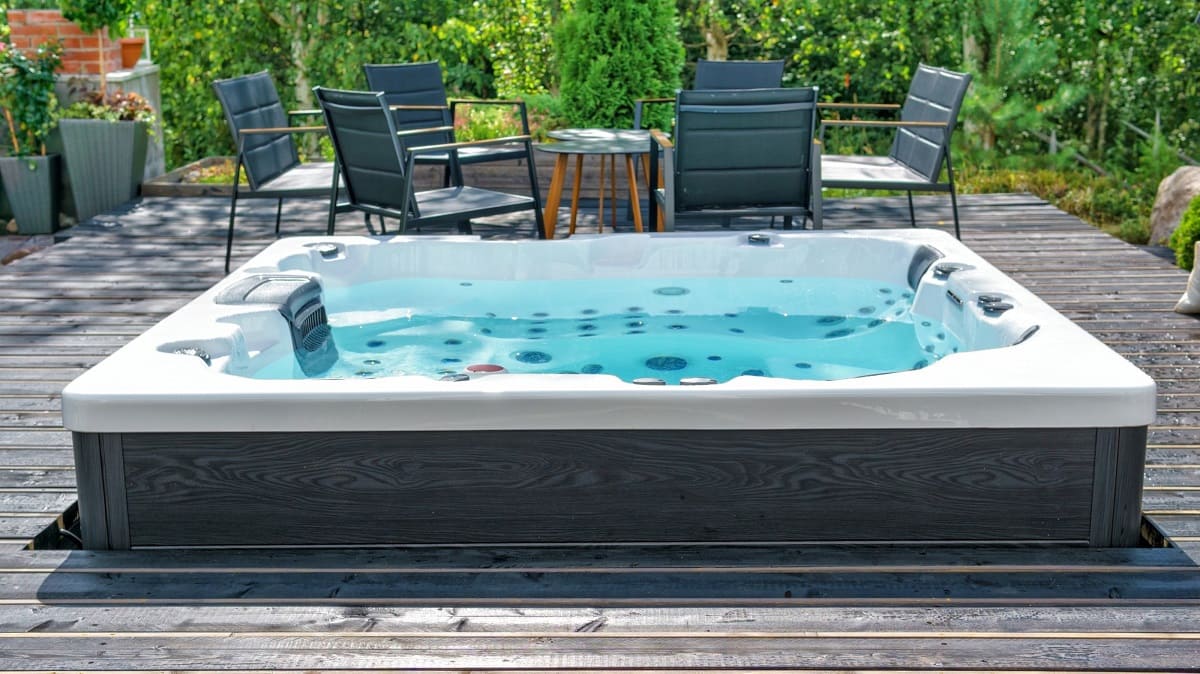
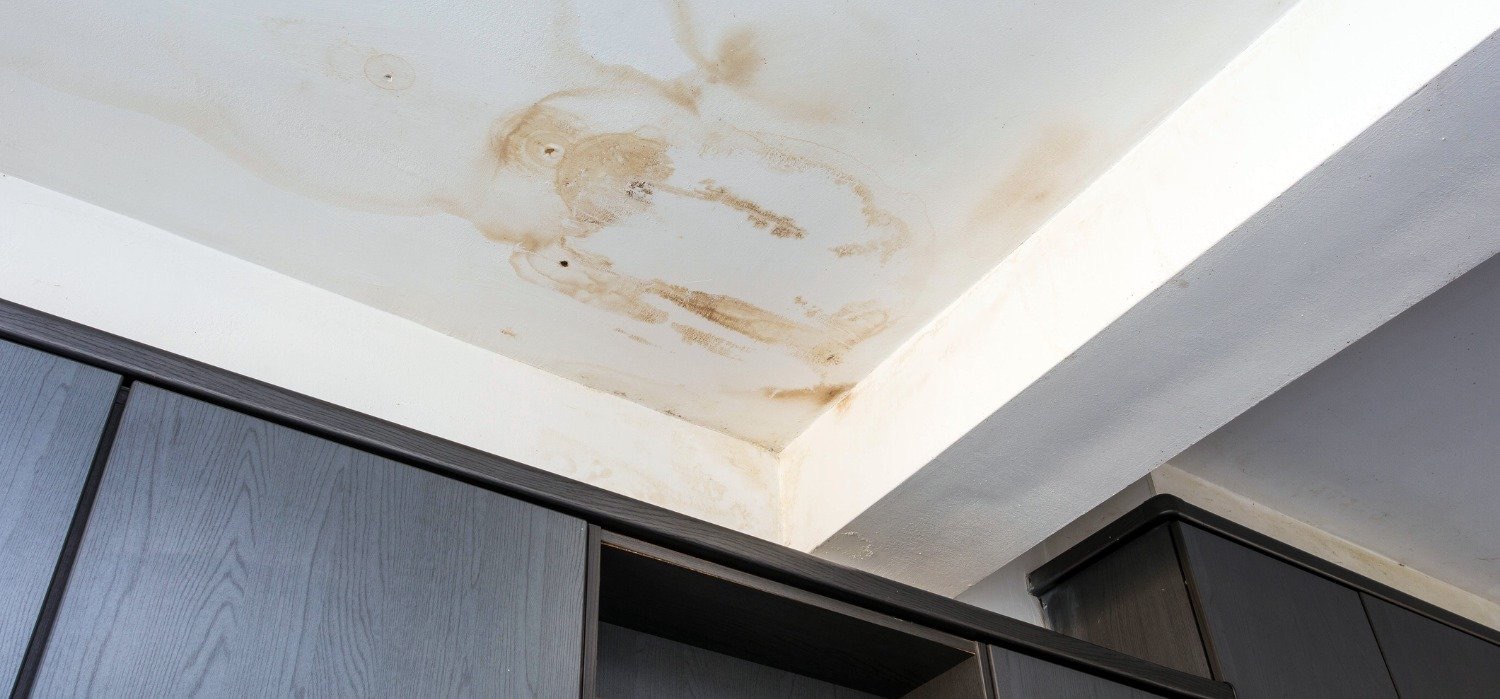
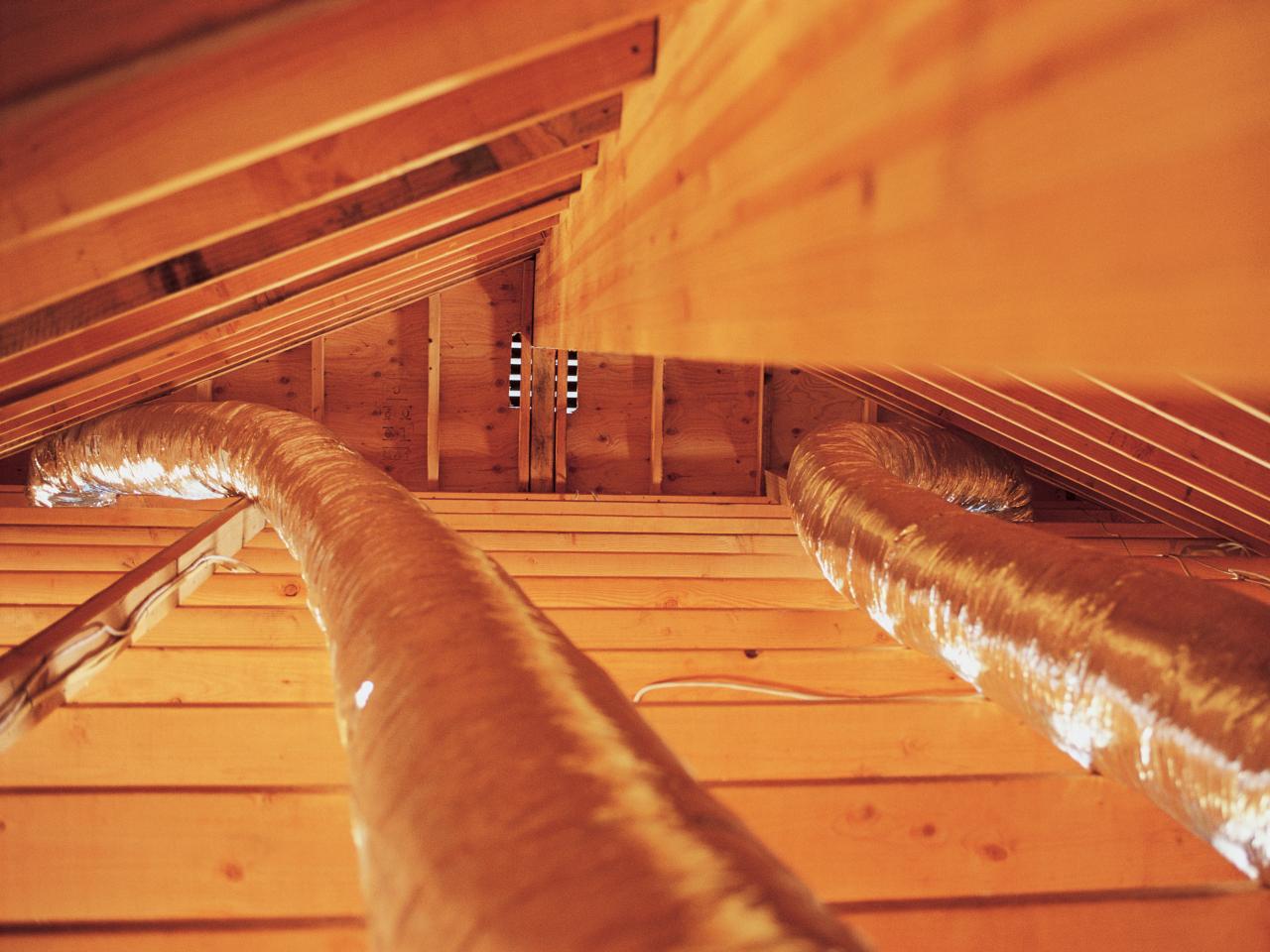
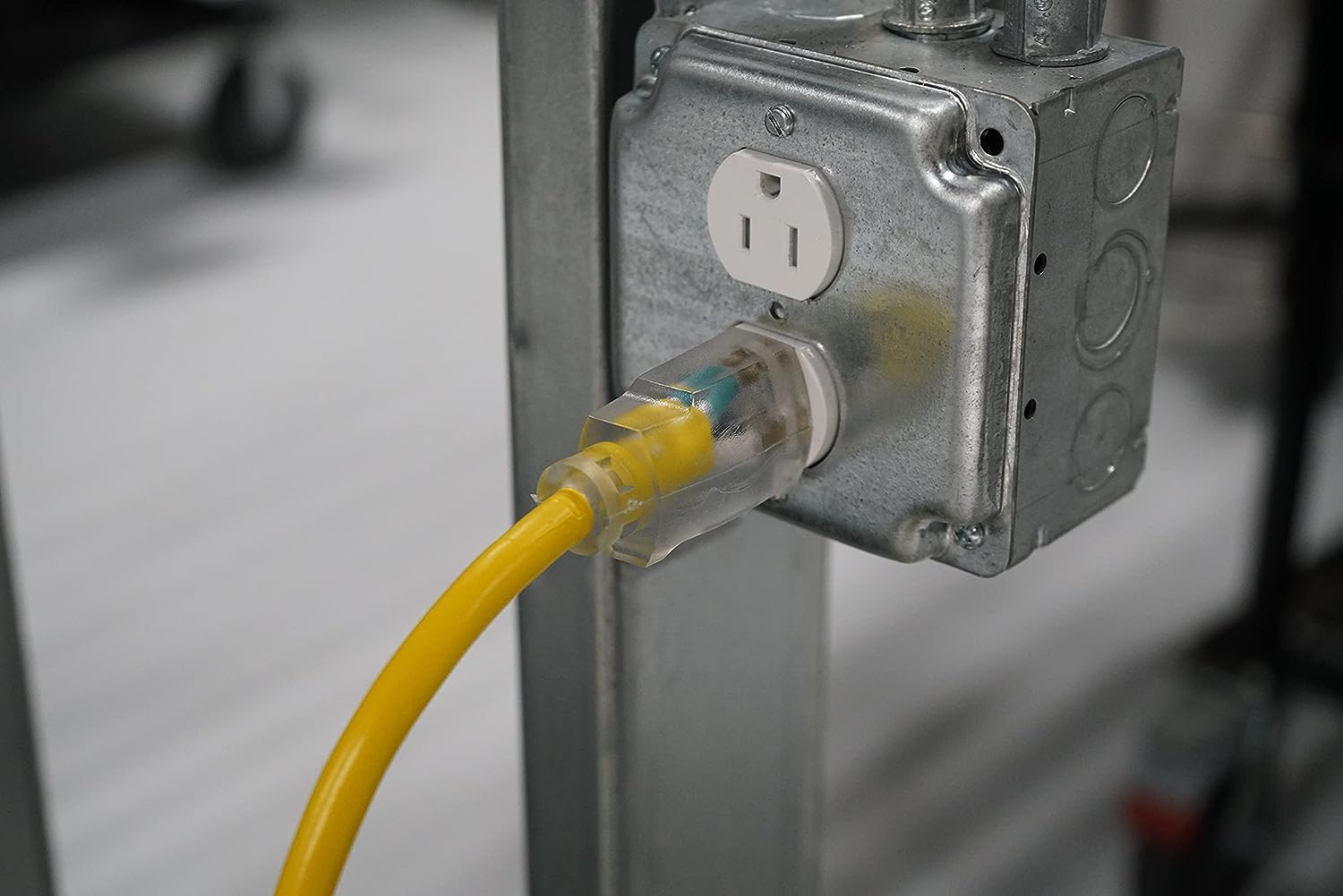
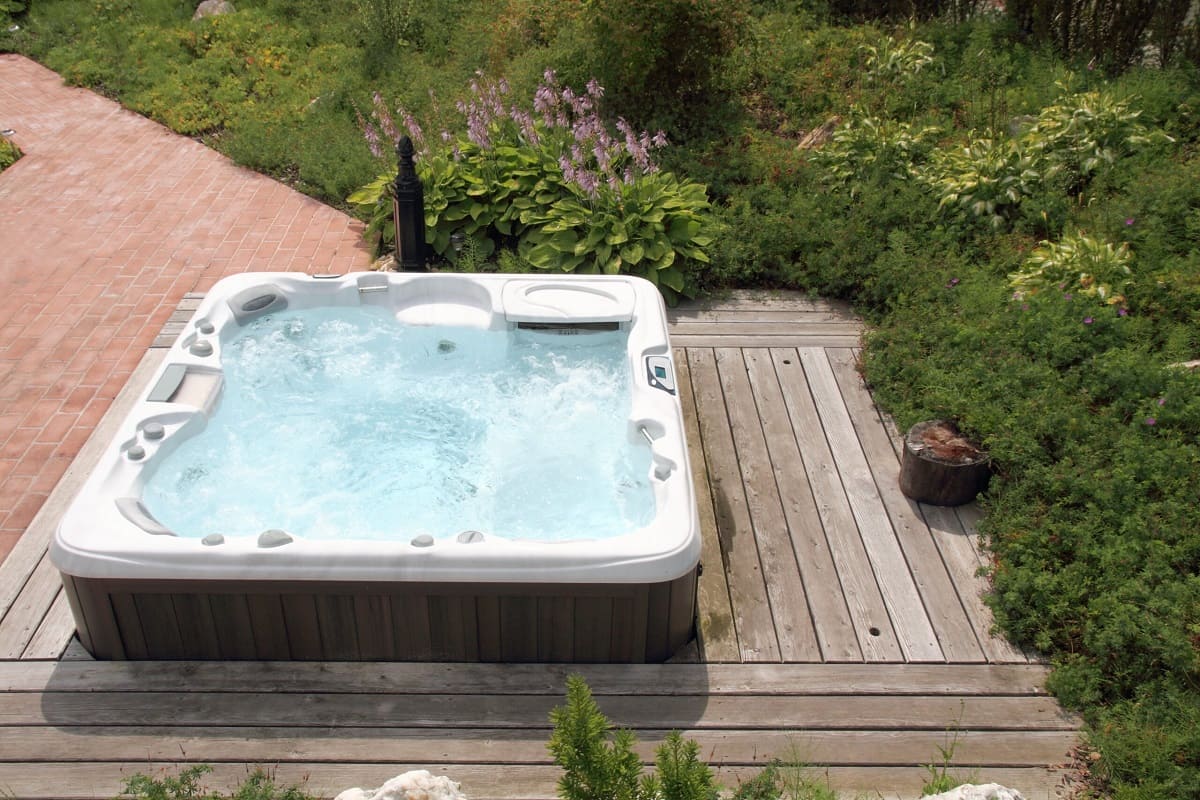
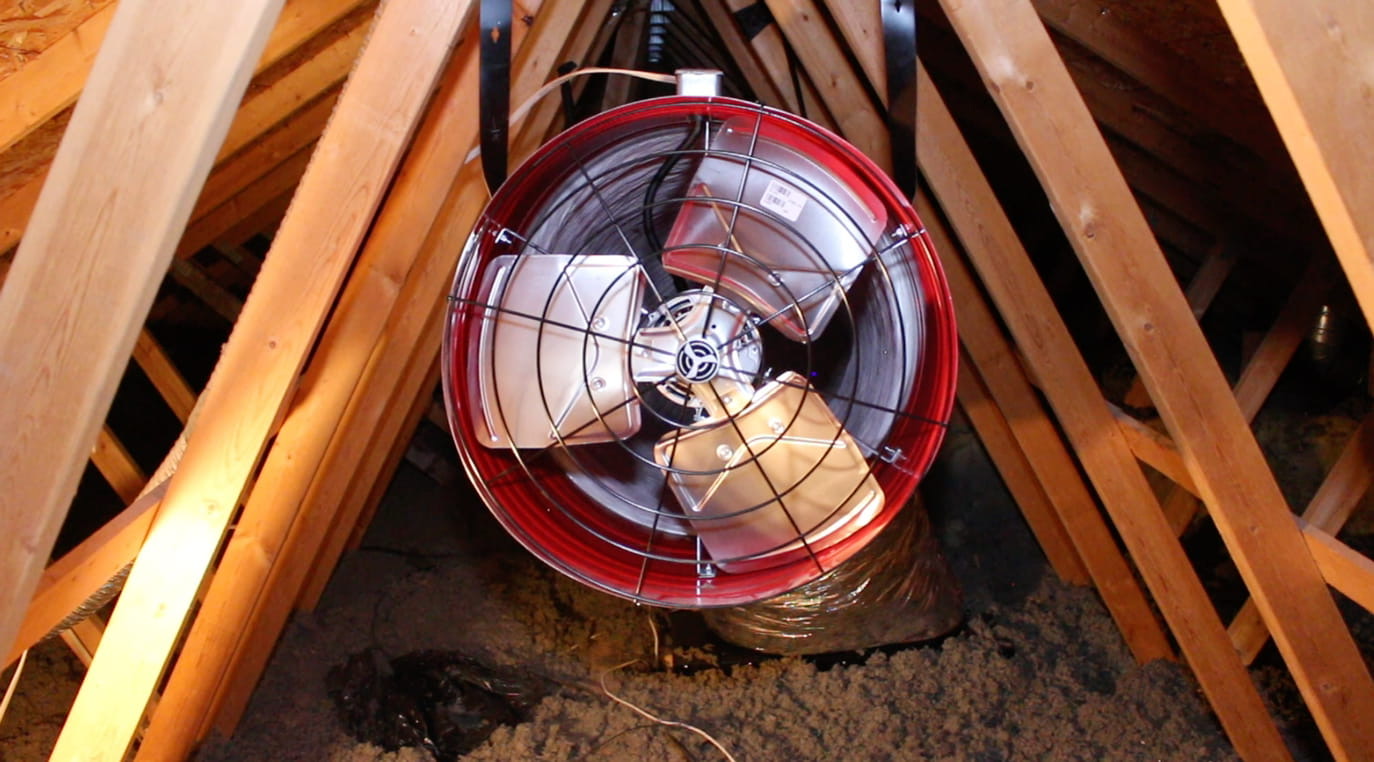

0 thoughts on “Why Does My Attic Get So Hot”